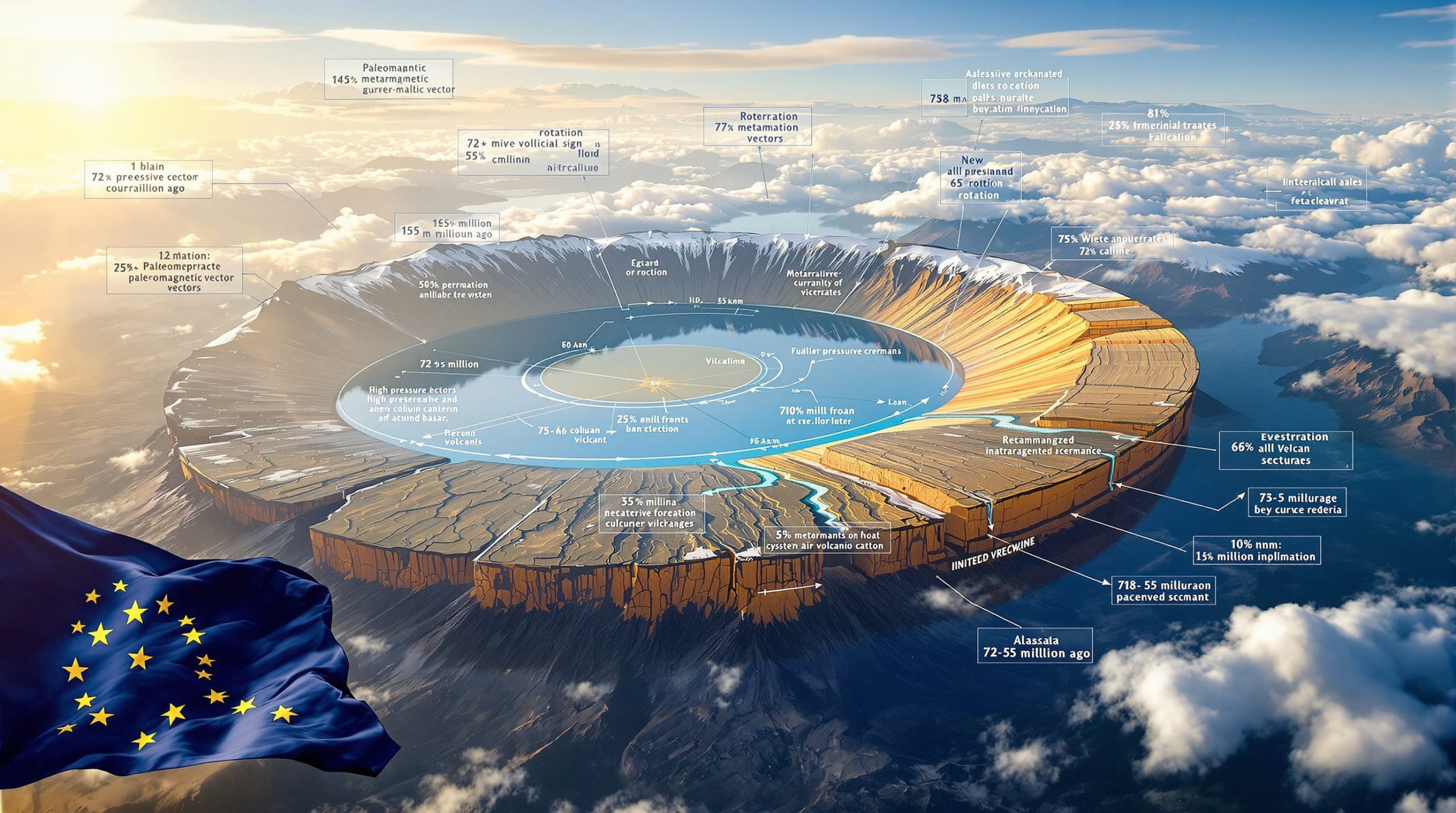What Are Public-Private Partnerships in Critical Minerals?
Public-private partnerships in critical minerals represent sophisticated collaborative frameworks where government entities and private sector investors combine resources, expertise, and risk management capabilities to develop secure supply chains for essential materials. These arrangements merge public policy support with private sector innovation to address the complex challenges of mineral extraction, processing, and distribution across global markets.
The fundamental structure enables governments to provide strategic oversight and initial capital while leveraging private sector operational efficiency and technical expertise. This model has become increasingly vital as Western economies confront supply chain vulnerabilities in materials essential for modern technology, defense systems, and clean energy transitions. Policy and public private partnerships in securing critical minerals have emerged as the cornerstone of Western strategic responses to supply chain concentration risks.
Strategic Context and Market Dynamics
Critical mineral supply chains face unprecedented concentration risks, particularly from Chinese dominance across processing and refining activities. China maintains control over approximately 60-90% of global rare earth processing and refining capabilities, with this figure reaching upwards of 90% when including downstream processing activities. This concentrated supply structure creates significant bottleneck risks for Western economies dependent on these materials for smartphones, electric vehicles, and defense applications.
The demand drivers continue expanding rapidly across multiple sectors. Cobalt remains essential for smartphone batteries and rechargeable electronics, while lithium has become critical for electric vehicle battery production. The artificial intelligence revolution has created massive copper requirements for data center infrastructure, requiring substantial increases in copper supply. Defense applications, including conventional defense systems and emerging technologies like missile defense systems and drone manufacturing, require substantial critical mineral inputs.
Partnership Structure Components
Effective PPPs in critical minerals typically incorporate several key structural elements:
• Government financial backing through equity stakes, loans, grants, or price guarantees
• Private sector technical expertise covering metallurgy, engineering, and operational management
• Shared risk management frameworks across project development lifecycles
• Strategic coordination mechanisms aligning national security objectives with commercial viability requirements
The International Finance Corporation (IFC), the private sector investment arm of the World Bank, recently established its first partnership with a private equity firm investing in the mining sector through APN Capital Advisory. This structure demonstrates how multilateral institutions can leverage private sector sourcing capabilities and in-house teams of metallurgists and engineers for technical due diligence while providing access to substantial capital pools.
How Government Policy Shapes Critical Mineral Development
Government policy frameworks have evolved to address the strategic challenges posed by concentrated supply chains and increasing demand for critical minerals. Modern industrial strategies integrate multiple policy tools including financial incentives, regulatory streamlining, and international cooperation mechanisms to support domestic mining capabilities while building resilient supply chains with trusted partners.
Investment and Financial Support Mechanisms
Strategic investment frameworks typically deploy comprehensive approaches combining direct government participation with market-based incentives. The Mountain Pass rare earth operations in the United States exemplifies this approach, where the Department of Defense took an equity stake in exchange for providing price floor mechanisms to ensure project economics. Furthermore, recent developments like the US Exim antimony loan demonstrate how government financing can unlock strategic mineral projects.
Financial support structures include:
• Direct government investment through equity stakes in strategic projects
• Loan facilities and guarantees with favorable terms for critical mineral ventures
• Grant programs supporting research, development, and processing capabilities
• Price floor mechanisms ensuring minimum project returns during market volatility
Regulatory Optimisation and Streamlining
Permitting frameworks represent critical policy levers requiring careful balance between maintaining high environmental and social governance standards while reducing development timelines and increasing predictability. Western jurisdictions including Europe, the United Kingdom, United States, Canada, and Australia face challenges in bringing down timeframes and increasing certainty around permitting processes without compromising environmental standards. Comprehensive guidance on this complex process can be found in our mining permitting guide.
Key regulatory improvements include:
• Expedited environmental review processes maintaining sustainability requirements
• Coordinated federal and state approval procedures eliminating redundant assessments
• Standardised technical and safety requirements providing clear development pathways
• Predictable approval timelines with established milestones and decision points
International Collaboration Models
The United States and Australia have established a comprehensive collaboration initiative representing a new model for allied cooperation in critical minerals development. This partnership encompasses geological mapping, processing and refining capability development, and recycling infrastructure advancement, which represents a growing area for the mining sector. This collaboration forms a key component of the broader critical minerals strategy emerging across Western economies.
The collaboration includes an initial six-month government seed capital commitment of approximately $3 billion from respective US and Australian governments, designed to unlock $15-50 billion of private investment representing a multiplier effect of approximately 5-17 times the initial government commitment.
This partnership scope explicitly encompasses:
• Geological mapping initiatives with shared resource assessment data
• Processing and refining capability development across both nations
• Recycling infrastructure representing emerging growth opportunities
• Technology transfer agreements for processing innovations
What Makes Public-Private Partnerships Effective in Mining?
Effective PPPs in critical minerals require precise alignment between investor selection capabilities and government support mechanisms rather than direct government project selection. The fundamental approach emphasises choosing experienced investors wisely rather than attempting to select specific commercial projects, maintaining market-based allocation principles while providing strategic support.
Risk Distribution and Capital Mobilisation
Successful partnership structures address the fundamental challenge of capital-intensive mining projects with extended development timelines and uncertain returns. Government seed capital reduces early-stage investment risks while private sector expertise ensures operational efficiency throughout project lifecycles.
The financial structure creates several distinct advantages:
• Government participation signals credibility to additional institutional investors
• Private sector operational expertise ensures efficient capital allocation
• Shared ownership models align public policy objectives with commercial returns
• Blended financing structures attract follow-on investment from pension funds and sovereign wealth funds
Technical Expertise Integration
Mining development requires specialised technical capabilities spanning geological assessment, metallurgical processing, environmental compliance, and operational management. PPPs leverage complementary strengths where government provides regulatory knowledge and diplomatic support while private investors contribute operational expertise and project delivery capabilities.
APN Capital Advisory has demonstrated exceptional project delivery performance, bringing 12 mining projects into production since 2016, which exceeds the combined production records of the five largest global mining companies during this period. This track record indicates the efficiency advantages of targeted investment vehicles compared to traditional large-cap mining company structures.
The firm maintains rigorous capital allocation discipline, evaluating approximately 1,000 projects annually while providing investment commitments to only 3-5 projects per year, representing a selection rate of 0.3-0.5%. This selective approach ensures that government partnership support targets the highest-quality opportunities with proven management teams and viable project economics.
Managed Account Structures
The IFC-APN Capital partnership demonstrates innovative structure design through dedicated managed accounts enabling separate investment pools with distinct governance frameworks. This arrangement provides the IFC access to up to $1 billion in capital allocation while leveraging APN Capital's sourcing and technical capabilities for investments in jurisdictions that might previously have been considered too risky.
The structure enables APN Capital to invest more broadly while maintaining common themes around high environmental and social governance standards, ensuring alignment with the IFC's development mandate and commercial return requirements.
How Different Regions Approach Critical Mineral Security
Regional approaches to critical mineral security reflect varying resource endowments, industrial capabilities, and geopolitical priorities. Resource-rich nations like Australia and Canada focus on expanding extraction and processing capabilities, while resource-dependent economies like the European Union and Japan emphasise supply chain diversification and strategic partnerships with resource-abundant allies.
Resource-Rich vs. Resource-Dependent Strategies
Nations with abundant natural resources face different strategic imperatives compared to countries dependent on mineral imports. Australia and Canada prioritise expanding domestic extraction capabilities while developing value-added processing activities to capture additional economic benefits from resource development. Countries exploring mineral beneficiation opportunities can learn from these successful models.
Resource-dependent economies adopt alternative approaches:
• European Union prioritises supply chain diversification away from concentrated sources
• Japan leverages financial institutions to support overseas mining investments
• Both regions invest substantially in recycling and circular economy technologies
• Development of alternative materials and substitution programmes reduces import dependencies
Hub-and-Spoke Partnership Models
Advanced economies increasingly adopt flexible partnership strategies combining domestic capabilities with international cooperation through what can be characterised as hub-and-spoke models. This approach emphasises onshore processing when permitting and capital support enable economically viable operations, while pursuing friendshoring arrangements when domestic development faces constraints.
The strategic framework includes:
• Onshore processing prioritised for critical applications when feasible given permitting and energy cost considerations
• Friendshoring partnerships with trusted allies including Gulf states for refining and processing activities
• Investment in overseas projects securing supply access through equity participation
• Development of strategic reserves and emergency stockpile capabilities
European Coordination Challenges
European Union frameworks face coordination challenges despite establishing comprehensive strategic plans for critical minerals development. The fundamental gap exists between strategic framework development and operational delivery of specific investment programmes.
European approaches require resolution of coordination questions regarding which institutions drive forward implementation plans and where investors should engage regarding capital expenditure and other operational dimensions. The European frameworks exist, but transformation from strategic outlines to operational delivery represents the primary implementation challenge.
Gulf Region Strategic Opportunities
The Gulf region represents a growing area for both investment capital and private sector involvement in critical minerals development. Gulf sovereign wealth funds demonstrate increasing interest in moving up the value chain into refining and processing activities, representing strategic partnership opportunities for Western economies seeking to diversify processing capabilities.
Gulf partnerships offer advantages including:
• Access to substantial sovereign wealth fund capital for infrastructure development
• Geographic positioning enabling processing activities with lower energy costs
• Strategic partnerships with high trust allies maintaining supply chain security
• Processing capabilities development reducing dependence on concentrated Chinese facilities
What Are the Key Policy Tools for Critical Mineral Security?
Government policy tools for critical mineral security encompass financial support mechanisms, regulatory optimisation, and international coordination frameworks. These tools must address the fundamental challenge that mining sectors demonstrate notorious inefficiency in capital allocation while competing against strategic subsidies and command economy advantages deployed by competitors like China.
Capital Expenditure Support Mechanisms
Capital expenditure represents the primary policy lever governments must deploy to level competitive playing fields for Western investors. China has pursued a concerted strategy over the last 20 years of acquiring mines and mining projects through strategic subsidies and command economy tools unavailable to market-based economies. Recent initiatives such as the executive order on critical minerals demonstrate how policy frameworks are evolving to address these challenges.
Specific financial support tools include:
• Direct equity participation in strategic mining projects following the Mountain Pass model
• Price floor mechanisms ensuring minimum returns during commodity price volatility
• Loan guarantees reducing borrowing costs for capital-intensive development projects
• Grant programmes supporting research and development in processing technologies
• Accelerated depreciation schedules for mining equipment and processing facilities
The Mountain Pass structure demonstrates integrated policy approaches combining direct government investment through equity stakes, market protection via price floors, and original equipment manufacturer participation through companies like Apple. This hybrid approach represents sophisticated policy tooling extending beyond simple subsidy mechanisms.
Permitting and Regulatory Efficiency
Permitting optimisation requires reducing development timelines and increasing predictability while maintaining high environmental and social governance standards. Western jurisdictions must address permitting challenges affecting both housing development and mining projects through coordinated federal and state approval processes.
Key permitting improvements include:
• Executive orders expediting permitting while maintaining environmental standards
• Standardised technical and safety requirements across jurisdictions
• Federal-state coordination eliminating redundant approval processes
• Predictable timelines with clear approval pathways and decision milestones
Foreign Policy Integration
Foreign policy coordination provides additional policy tools through what can be characterised as foreign policy wrapper approaches. When governments seek private investment in higher-risk jurisdictions, diplomatic assurances and development policy support can influence commercial investment decisions favourably.
Foreign policy tools include:
• Diplomatic assurances for investments in geopolitically complex regions
• Development policy supporting infrastructure including roads, rail, and port facilities
• Trade policy coordination aligning commercial and security objectives
• Bilateral government-to-government agreements providing investment protection frameworks
These mechanisms can influence commercial decisions toward strategic investment while maintaining market-based allocation principles and competitive return requirements.
How Do PPPs Address Environmental and Social Concerns?
Policy and public private partnerships in securing critical minerals incorporate environmental and social governance principles as fundamental requirements rather than optional considerations. Modern PPP structures mandate high ESG standards while enabling commercial returns, demonstrating that sustainability and profitability can be effectively integrated in mining development.
ESG Standard Integration
Environmental and social governance requirements are embedded throughout PPP structures as mandatory components rather than voluntary guidelines. The IFC-APN Capital partnership exemplifies this approach through common themes around high ESG standards ensuring alignment with development mandates while achieving commercial objectives. According to critical insecurity analysis, these standards are becoming increasingly important for market access and investor confidence.
Key ESG integration elements include:
• Mandatory environmental impact assessments with ongoing monitoring requirements
• Water and air quality standards exceeding minimum regulatory compliance
• Habitat restoration and biodiversity protection measures integrated into project planning
• Carbon footprint reduction targets incorporated into operational procedures
Community Engagement Requirements
Modern PPP frameworks require comprehensive community engagement processes before project approval, ensuring local populations benefit from mining development while maintaining social licence to operate throughout project lifecycles.
Community engagement components include:
• Local consultation processes with affected communities before project approval
• Benefit-sharing agreements providing economic opportunities for local populations
• Skills development and employment programmes prioritising local hiring
• Cultural heritage protection protocols respecting indigenous and traditional land uses
Circular Economy Integration
Recycling infrastructure development represents a growing area for mining sector investment, with PPPs increasingly emphasising circular economy principles to reduce extraction pressures while meeting increasing demand for critical minerals.
The US-Australia collaboration explicitly incorporates recycling as a key component, recognising that urban mining and e-waste processing capabilities will become essential elements of secure supply chains. This approach reduces environmental impacts while developing domestic processing capabilities for materials recovery from end-of-life products.
Circular economy elements include:
• Investment in recycling technology development and deployment
• Collection and processing systems for electronic waste and battery materials
• Research into material substitution reducing demand for virgin mineral extraction
• Product design requirements enabling efficient material recovery and reuse
What Challenges Do PPPs Face in Critical Minerals?
Policy and public private partnerships in securing critical minerals encounter significant challenges balancing commercial objectives with strategic policy requirements while navigating competitive dynamics against state-directed investment from non-market economies. These challenges require sophisticated partnership structures and sustained political commitment across multiple electoral cycles.
Balancing Commercial and Strategic Objectives
PPPs must navigate inherent tensions between market efficiency requirements and national security imperatives. Private investors require competitive returns and operational flexibility, while government partners prioritise supply security and strategic autonomy that may not align with purely commercial optimisation.
Common structural challenges include:
• Reconciling private sector profit requirements with public policy timelines
• Managing political risks in overseas investment projects spanning multiple government terms
• Ensuring sustained government commitment despite changing political priorities
• Balancing transparency requirements for public accountability with competitive sensitivity
The Eisenhower Paradox in Liberal Democracies
Liberal democracies face structural vulnerabilities in addressing long-term strategic challenges like critical mineral security. This challenge can be characterised through what President Eisenhower described in 1954: urgent problems and serious problems exist, but serious problems are never urgent while urgent problems are never serious.
Critical minerals policy has historically suffered from this democratic vulnerability, where long-term supply security challenges are deprioritised against immediate political pressures and electoral cycles. Western approaches are approximately 20 years behind China's coordinated strategy, requiring sustained commitment to strategic catch-up initiatives.
International Competition and Coordination
Global critical mineral markets create complex coordination challenges for PPP initiatives, particularly when competing against state-directed investment strategies that can deploy subsidies and strategic tools unavailable to market-based economies.
Competitive dynamics include:
• Competition with state-directed Chinese investment backed by command economy advantages
• Coordination difficulties among multiple allied nations with different regulatory frameworks
• Technology transfer restrictions and export controls affecting partnership scope
• Market manipulation risks from concentrated supply sources influencing pricing
Marketplace Fragmentation
The critical minerals marketplace demonstrates significant fragmentation rather than efficient capital allocation, creating opportunities for strategic government intervention through investor selection rather than direct project picking. This fragmentation requires PPP structures that combine government support with proven private sector delivery capabilities.
APN Capital Advisory maintains thousands of projects in its database that have not yet received investment approval but could receive green-light decisions with appropriate government support mechanisms. This substantial pipeline capacity indicates that effective PPP structures can mobilise significant additional investment when properly structured.
How Do Successful PPPs Measure Impact?
Effective PPPs establish comprehensive performance measurement frameworks assessing both commercial success and policy objective achievement. These measurement systems must demonstrate value creation for government partners while delivering competitive returns for private investors across project lifecycles spanning multiple years or decades.
Performance Metrics and Evaluation Frameworks
Successful PPP measurement requires metrics addressing multiple stakeholder objectives including supply security, commercial returns, environmental compliance, and community impact. Performance evaluation must occur throughout project lifecycles rather than only at completion. The securing critical supply milestone demonstrates the importance of establishing clear measurement criteria from project inception.
Key performance indicators include:
• Production capacity increases and supply chain resilience improvements measurable against baseline vulnerability assessments
• Investment leverage ratios demonstrating private capital mobilisation relative to government seed funding
• Employment creation and local economic development impacts in project regions
• Environmental compliance performance and community satisfaction measures
Long-term Success Measurement
PPP success measurement must extend beyond initial project development to encompass sustained operational performance, technology advancement, and strategic objective achievement over multiple commodity cycles.
Long-term success factors include:
• Sustained production growth and operational efficiency improvements over project lifecycles
• Technology innovation and process improvement achievements reducing costs and environmental impacts
• Supply chain diversification outcomes reducing dependence on concentrated sources
• Return on investment performance for both public and private partnership participants
Capital Multiplication Analysis
The US-Australia collaboration provides a concrete example of PPP impact measurement through capital multiplication metrics. The initial $3 billion government seed capital targets unlocking $15-50 billion in private investment, representing measurable leverage ratios demonstrating government investment efficiency.
This multiplication analysis enables assessment of:
• Government capital efficiency compared to direct government investment approaches
• Private sector confidence indicated through follow-on investment commitments
• Project pipeline development demonstrating sustained partnership momentum
• Supply chain security improvements relative to investment levels
What Does the Future Hold for Critical Mineral PPPs?
The future evolution of critical mineral PPPs reflects changing geopolitical realities, technological advancement opportunities, and increasing integration of climate objectives with security requirements. Partnership models must scale across multiple projects and jurisdictions while maintaining effectiveness and efficiency standards demonstrated in initial implementations.
Emerging Partnership Models and Innovation Areas
Future PPP development incorporates technological innovations spanning artificial intelligence integration in mining operations, advanced materials research for substitution applications, and blockchain technologies enabling supply chain transparency and traceability.
Innovation areas include:
• Integration of artificial intelligence and automation reducing operational costs and safety risks
• Development of urban mining and e-waste processing capabilities creating domestic supply sources
• Advanced materials research enabling substitution and efficiency improvements reducing virgin material requirements
• Blockchain and digital technologies providing supply chain transparency and conflict mineral compliance
Scaling Challenges and Growth Opportunities
Future success depends on the ability to scale effective partnership models across multiple projects and jurisdictions while reducing transaction costs and increasing standardisation. This scaling requires development of specialised financial institutions and standardised frameworks reducing negotiation complexity.
Growth factors enabling scale include:
• Standardisation of PPP frameworks reducing transaction costs and negotiation timelines
• Development of specialised financing institutions focused exclusively on critical minerals investment
• Integration of climate objectives with security requirements creating unified policy frameworks
• Expansion of partnership models incorporating technology companies and end-user manufacturers
Geopolitical Evolution and Strategic Competition
Critical minerals PPPs operate within evolving geopolitical contexts requiring adaptation to changing alliance structures, trade relationships, and strategic competition dynamics. Future partnership success requires flexibility responding to shifting international circumstances while maintaining core supply security objectives.
Strategic considerations include:
• Evolution of allied cooperation frameworks beyond bilateral agreements toward multilateral structures
• Integration of defence industrial base requirements with civilian supply chain objectives
• Development of emergency response capabilities and strategic stockpile coordination
• Technology transfer policies balancing cooperation with strategic advantage protection
Market Psychology and Investment Dynamics
The mining sector faces fundamental challenges in capital allocation efficiency that PPPs must address through improved investment selection and risk management. Original equipment manufacturers like Apple demonstrate increasing direct involvement in supply chain investment, indicating evolution toward multi-stakeholder partnership models extending beyond government-investor structures.
Future market dynamics will likely include:
• Increased OEM participation in upstream supply chain investment reducing supply risks
• Sovereign wealth fund involvement from allied nations seeking diversified investment opportunities
• Technology company integration bringing digital capabilities to traditional mining operations
• Financial innovation creating new instruments specifically designed for critical mineral investment
The fundamental challenge remains demonstrating that liberal Western democracies possess the concentration span and long-term commitment capabilities necessary to compete effectively with strategic approaches deployed by command economies. Success requires sustained commitment across electoral cycles while maintaining market-based efficiency and environmental standards that differentiate democratic approaches from authoritarian alternatives.
This represents both the challenge and the opportunity: demonstrating that policy and public private partnerships can create a race to the top in ESG standards while delivering the supply chain security essential for economic prosperity and national security in the decades ahead.
Are You Ready to Capitalise on Critical Mineral Opportunities?
The future of critical minerals presents unprecedented opportunities for investors who can identify significant discoveries early. Discovery Alert's proprietary Discovery IQ model delivers instant notifications on major ASX mineral discoveries, transforming complex geological announcements into actionable investment insights before the broader market responds. Begin your 30-day free trial today and secure your competitive advantage in this rapidly evolving sector.




